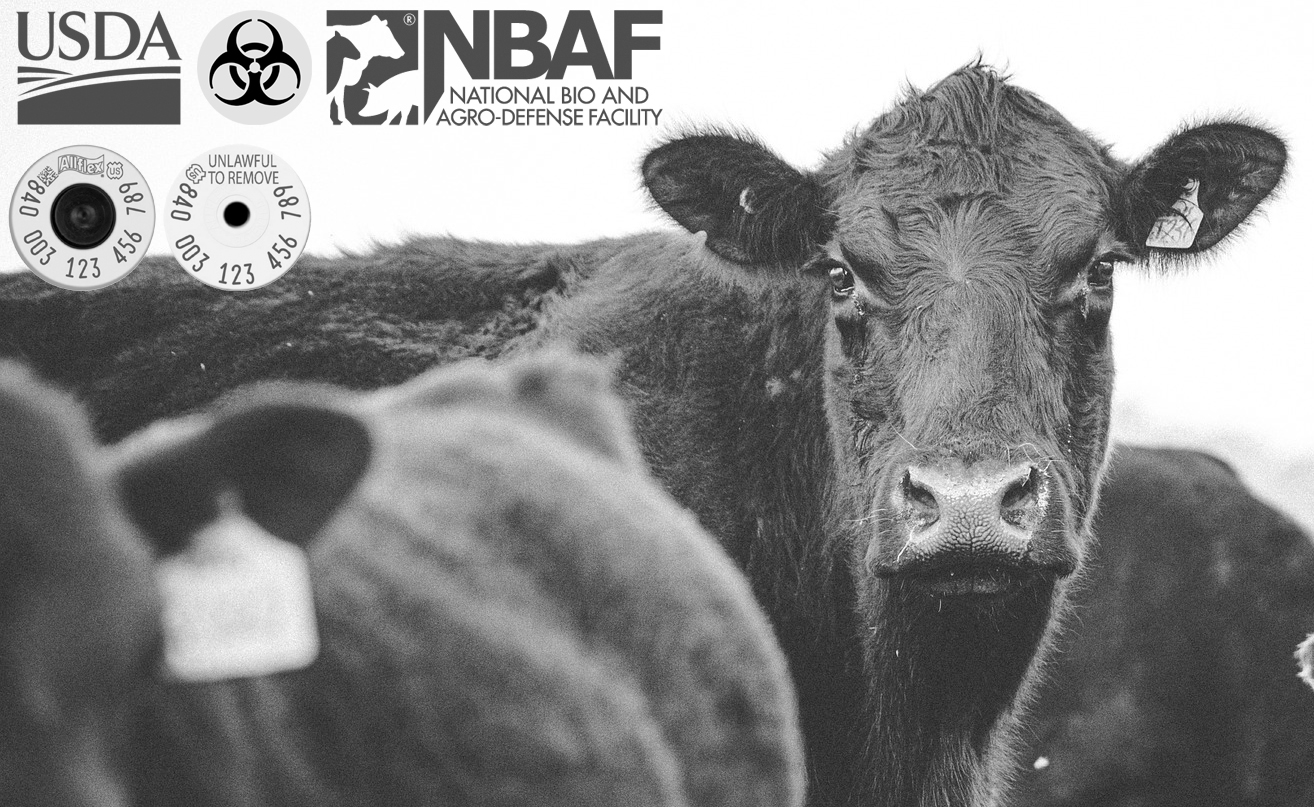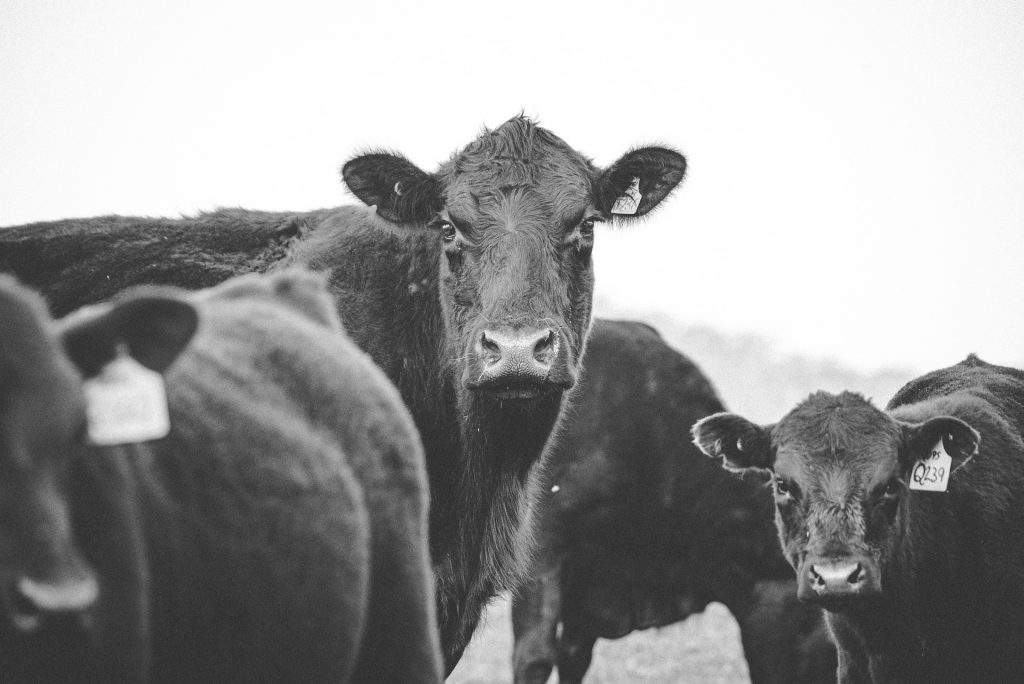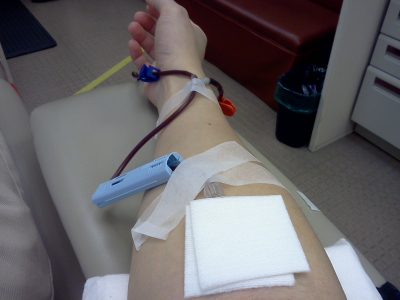USDA Hitting Food Supply Chain with Cattle Surveillance and A Level-4 Animal Disease Laboratory
by Corey Lynn, Corey’s Digs:
 Remember the days when you thought chipping a cute little kitten you rescued from an animal shelter was super convenient, in case the little guy ever strayed? How innocent it all seemed. It was such a grand idea that “activists” pushed so hard for. Fast forward a couple decades and it’s easy to see where this was all headed, and right now, the cattle are being targeted and humans aren’t far behind. Coincidentally, RFID (radio frequency identification) chips were piloted on cattle in three states, one of which is about to get a level-4 biosafety laboratory.
Remember the days when you thought chipping a cute little kitten you rescued from an animal shelter was super convenient, in case the little guy ever strayed? How innocent it all seemed. It was such a grand idea that “activists” pushed so hard for. Fast forward a couple decades and it’s easy to see where this was all headed, and right now, the cattle are being targeted and humans aren’t far behind. Coincidentally, RFID (radio frequency identification) chips were piloted on cattle in three states, one of which is about to get a level-4 biosafety laboratory.
TRUTH LIVES on at https://sgtreport.tv/
Microchipping pets was introduced in 1986, though DARPA had long been working with microchips prior to that. By 1996, ISO standards were created so that all microchips would be compatible with the same scanner. So in 2003, when a single cow was determined to have bovine spongiform encephalopathy (mad cow disease) in Washington state, the USDA set out to develop a national identification program by 2008-2009. That following year, APHIS (Animal and Plant Health Inspection Service) launched NAIS, a program between state and local government and the livestock industry to trace, manage and eradicate animal disease. To date, there have only been 6 cases of mad cow in the US, but that could all change with a new BSL-4 laboratory being built in Kansas.
Things were moving quickly in the world of microchipping. In 2004, the FDA approved an implantable RFID chip with a 16 digit identification number, to access medical records. The Verichip, manufactured by Applied Digital Systems, provides access to a persons medical records, personal information, family contact info, and insurance. By 2006, the Data Privacy and Integrity Advisory Committee to the Secretary and the Chief Privacy Officer of the Department of Homeland Security prepared a report on ‘The Use of RFID for Human Identity Verification,’ concluding that they had “concern that the deployment of RFID-enabled systems represents the potential for widespread surveillance of individuals, including US citizens, without their knowledge or consent.” Certainly, this administration will have differing views on that since tracking and surveillance is the name of their game.

In 2007 the USDA approved Digital Angel’s RFID chip for equine use. The Bio-Thermo LifeChip contains a passive transponder that can be read by an ISO-compliant reader. That same year, the USDA purchased $600,000 worth of RFID tags for cattle, from Digital Angel.
Despite the RFID tags being a voluntary program at that time, Michigan decided to make it mandatory “to aid efforts in eradication of bovine tuberculosis,” though it is so rare today, it only occurs 7 times per 1 million cattle herds on an annual basis.
Just last year, APHIS awarded contracts to provide up to 8 million RFID chips to cattle and bison producers.The contracts were awarded to: Allflex (Dallas, TX), Datamars (Temple, TX), and Y-Tex (Cody, WY). “USDA continues its commitment to protecting our Nation’s animal agriculture by increasing traceability in the cattle and bison sectors, in this case by providing free RFID tags to interested producers,” said Under Secretary for Marketing and Regulatory Programs Greg Ibach. “This will not only help offset the costs of switching to RFID tags, but also help us more quickly respond to potential disease events.”
They also state that the “USDA believes that RFID devices will provide States and the cattle and bison industries with the best opportunity to rapidly contain the spread of high economic impact diseases. Use of RFID tags better positions the livestock industry, State and Federal veterinarians to accurately and quickly trace animals exposed or infected with potentially devastating diseases before they can do substantial damage to the U.S. livestock industry.“
Why the hard push? It sounds eerily familiar. What diseases are they so up in arms about that haven’t been able to be traced by the identification ear tags worn by cattle for decades? Is it the 6 mad cow cases the US has seen?Foot-and-mouth disease (FMD) was eradicated in the US in 1929. It is a highly contagious viral disease which can spread quickly causing illness in cows, pigs, sheep, goats, deer, and other animals with divided hooves. It does not affect horses, dogs, or cats. Though it’s been eradicated, if the virus were to surface, a single detection could stop international trade completely and cause grave economic consequences. Knowing this, they have still chosen to move the BSL-4 animal disease research laboratory, who has these virus samples for study, from Plum Island NY to mainland Kansas. More on this below.
The USDA and APHIS were pushing hard for mandatory RFID tags on cattle, but they were met with resistance, so they backed down for a short stint on making them mandatory and APHIS released a statement saying they will encourage the use of RFID devices through financial incentives and will revisit this for future requirements. It’s reminiscent of how the Covid injections are being incentivized and pushed with vaccine id passports.
On March 23, 2021, the USDA announced its intent to pursue rulemaking on RFID use in animal disease traceability by 2023. In other words, they’re not giving up. They have a big plan that needs to be carried out. Many livestock producers are not on board with this agenda. The Billings, MT cattlemen’s group known as R-CALF, represented by the legal nonprofit New Civil Liberties Alliance (NCLA), is fighting the RFID technology in a federal court in Wyoming. The NCLA’s latest court document states “This case comes down to whether the U.S. Department of Agriculture and its subagency, the Animal and Plant Health Inspection Service (collectively “USDA”), either “established” or “utilized” two advisory committees within the meaning of the Federal Advisory Committee Act (FACA)” and that they “failed to comply with the statutory requirements of the Federal Advisory Committee Act (FACA).”
The NCLA alleges that one advisory committee, the Cattle Traceability Working Group (CTWG) was formed in 2017 with the intention of transitioning to mandatory RFIDs that would be further achieved by creating an industry-led task force to provide “technical advice” and support. The other advisory committee in question is called the ‘Producer Traceability Council’ (PTC), which consists of only pro-RFID individuals, was established in the spring of 2019 after the CTWG was ultimately dissolved due to disagreements over RFID eartags within the committee, according to NCLA. Joe Leathers, manager of the 6666 Ranch in Texas, and Chuck Adami with Equity Cooperative Livestock Sales Assn. are the PTC’s co-chairs.
The NCLA insist that the CTWG and the PRC are federal advisory committees covered by FACA, and the USDA failed to comply with procedures required by FACA for those committees. According to NCLA, the USDA established the committees without first filing a charter, failing to abide by FACA’s meeting, public access, disclosure, and balanced representation requirements.
They also contend that the USDA is in violation of the 2013 Final Rule. In 2013, the USDA issued a Final Rule confirming that cattle and bison producers need not use RFID eartags and could instead use brands, tattoos, metal eartags, group identification numbers, or backtags. The RFID chips would allow tracking of the cattle with an identification number, GPS location, and date and time. R-CALF says that there is a “hidden mandate” in the APHIS proposal requiring cattlemen to register their premises and obtain premise ID numbers. “Current regulations do not require a producer to register his or her premises as a prerequisite to shipping cattle interstate, but the proposal to mandate RFID does,” according to R-CALF.


